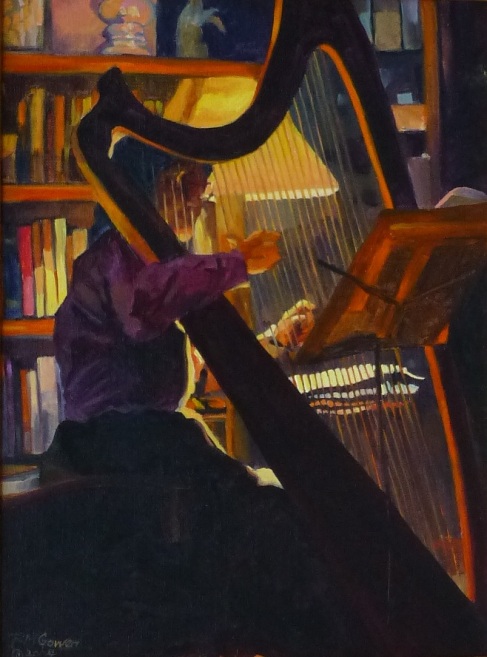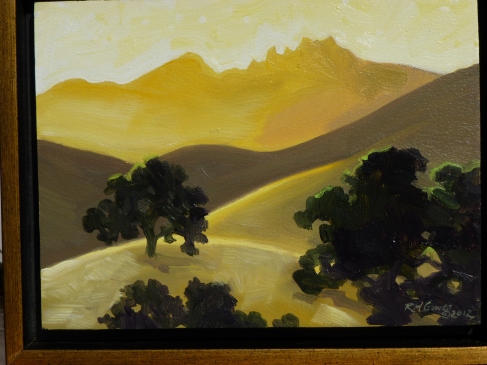I’ve stepped back from painting these past few days to plunge into the next novel’s rewrite. But the change forces me to wonder, what happens in writing that doesn’t in painting? I know I serve both arts because neither one has all that I need.
Am I wrong to fancy that I give you something different in experience when I open a door into the character’s heart with words, than I do in a passage of paint set down in passion? If I could also master music on my harp, would I then need all three modes of making, jostling for the hours of my day? Each creation with a different capacity?
I do have a harp… to tell the truth, I have three. One, a floor harp, travels with a young man I know on a long-term loan. He began about the age of eleven to pursue music, and my first harp has gone with him for the last nine years. I have a little travelling harp, a Limerick that I’ve played by the campfire in the Northern Sierra, simple tunes for nights among granite boulders and looming pines. Ponderosa mingling with poplar among the flowers of the early summer, patient with the notes from my hesitant fingers.
I remember Mary Jane telling me men shouldn’t play the harp because when they graduated to pedal, they wore no skirts to conceal the inelegant mouse-dart of their feet pressing the pattern of sharps. Mary Jane Barton taught me the harp in her pristine apartment in the retirement community. Over ninety two, fingers like mis-strung beads, but arthritis didn’t stop her from her hours of daily practice. She terrified me into learning to read music, a lesson no piano teacher ever managed. When I started piano at the age of five, no one including me, realized for years that I couldn’t read music. I replicated the sounds my teacher played, her timing and touch on the keys, the way she turned the pages. Mimicry.
Around four years in, we discovered I recognized no individual note, only phrases and pieces. I believe if this happened now with a young student, no surprise would ensue, and the mimicry would be turned to a teaching tool. But I left music behind in a general confusion of dismay, until as an adult I mentioned to a friend I liked the harp. My husband heard that, and next thing I knew…
Mary Jane Barton gave me a great gift. After she died at ninety four, (http://www.newspress.com/obits/2-20-2005obits.htm ) I painted a self-portrait, almost faceless in dim evening light, playing my great harp: A Tune for Mary Jane. Crossovers. One creation informs the rest.
I live with the great harp, my home harp, hand-built by my husband who believes in me so much I could never attain to all his belief in one lifetime. He’s the reason I have three harps – he built them each for me from Musicmaker’s kits. (You can find them at 
harpkit.com ) Finished, polished, the sharping levers precisely placed, rivets repaired at need. He believes I could play all parts of our private symphony with merely a little practice, and there come some winter evenings when the notes fall so sure and clear I nearly believe it myself.


